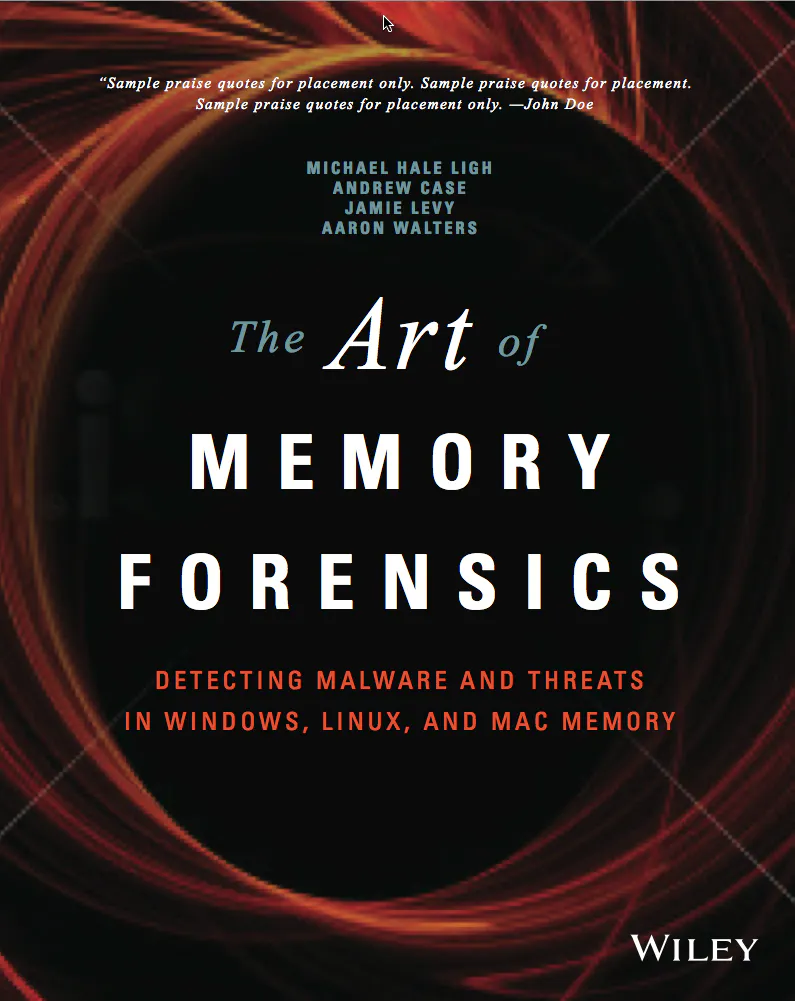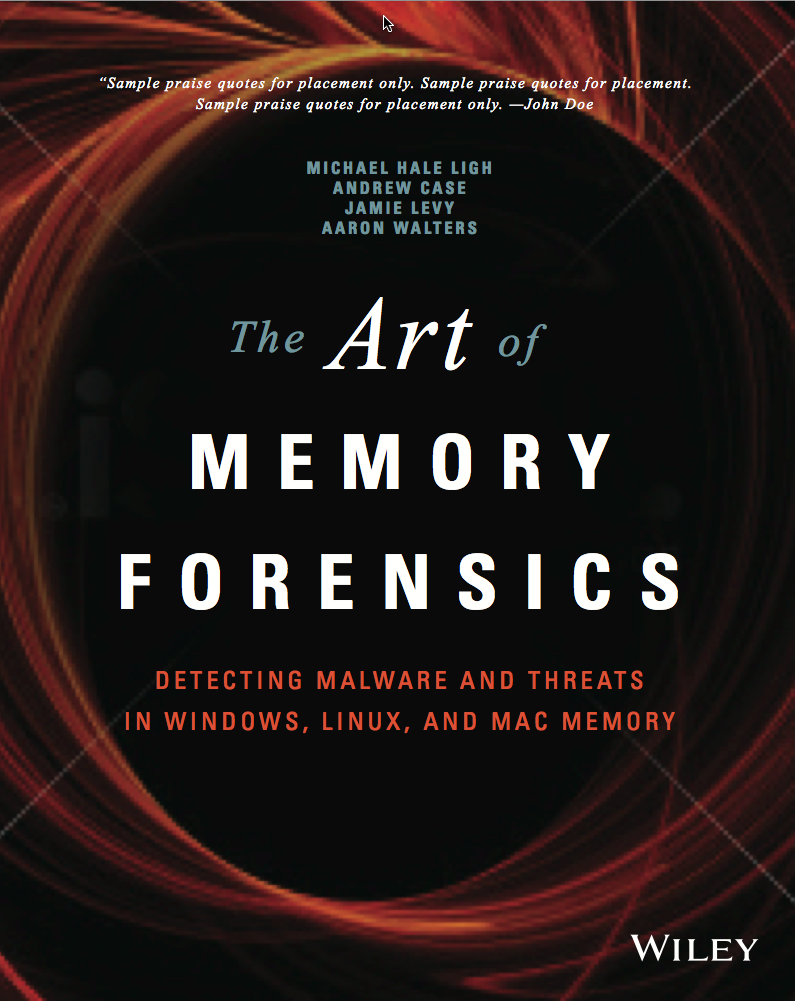[Book Review] The Art of Memory Forensics
 cpuu
cpuu

Introduction
In this blog post, I will be reviewing the comprehensive guide to memory forensics across multiple operating systems, "The Art of Memory Forensics: Detecting Malware and Threats in Windows, Linux, and Mac Memory" by Michael Hale Ligh, Andrew Case, Jamie Levy, and AAron Walters. The book offers an in-depth exploration of memory forensics, covering a wide range of topics from the fundamentals of memory acquisition to advanced techniques for identifying and analyzing malware and other threats in memory. The book is structured into four main parts, focusing on the foundations of memory forensics, Windows memory forensics, Linux memory forensics, and Mac memory forensics. Throughout this review, I will provide an overview of the book's content and structure, as well as share my thoughts on its strengths, weaknesses, and overall value for those interested in the field of memory forensics.
Summary of the Book
"The Art of Memory Forensics" is a comprehensive guide that provides a deep understanding of memory forensics across three major operating systems: Windows, Linux, and Mac. The book is organized into four main parts, each focusing on a different aspect of memory forensics. Here is a summary of the book's content, grouped into seven main categories:
Foundations of Memory Forensics: This section covers the basics of memory forensics, including systems overview, data structures, the Volatility Framework, and memory acquisition techniques.
In-Depth Windows Memory Forensics: This part delves into the intricacies of Windows memory forensics, covering essential concepts and techniques from Chapters 5 to 18, such as objects, processes, registry analysis, networking artifacts, kernel forensics, and rootkits.
Comprehensive Linux Memory Forensics: This section explores Linux memory forensics, focusing on key topics and methodologies from Chapters 19 to 27, including Linux memory acquisition, processes, networking artifacts, kernel memory artifacts, file systems in memory, and userland and kernel mode rootkits.
Exploring Mac Memory Forensics: This part examines Mac memory forensics, covering the core concepts from Chapters 28 to 31, such as Mac acquisition, internals, memory overview, malicious code and rootkits, and tracking user activity.
The book concludes with a comprehensive summary, highlighting the importance of memory forensics in the ever-evolving digital landscape and emphasizing the need for professionals to continually update their skills and knowledge in this critical field.
"The Art of Memory Forensics" is a valuable resource for professionals and enthusiasts alike, offering a systematic exploration of memory forensics across multiple platforms and providing practical guidance and insights to help readers excel in this domain.
My Review Comments
"The Art of Memory Forensics" is an exceptional resource that consolidates the collective knowledge of the developers behind the Volatility framework. This book is highly recommended for those embarking on their memory forensics journey. However, it is crucial to acknowledge that nearly a decade has elapsed since the book's publication. In particular, the Volatility tools discussed in the book were developed using Python 2. As of 2023, there have been notable advancements in the tools available for memory forensics. In a forthcoming post in this series, I will introduce the Volatility 3 framework, which delivers improved and expanded functionalities for conducting memory forensics.
Subscribe to my newsletter
Read articles from cpuu directly inside your inbox. Subscribe to the newsletter, and don't miss out.
Written by
